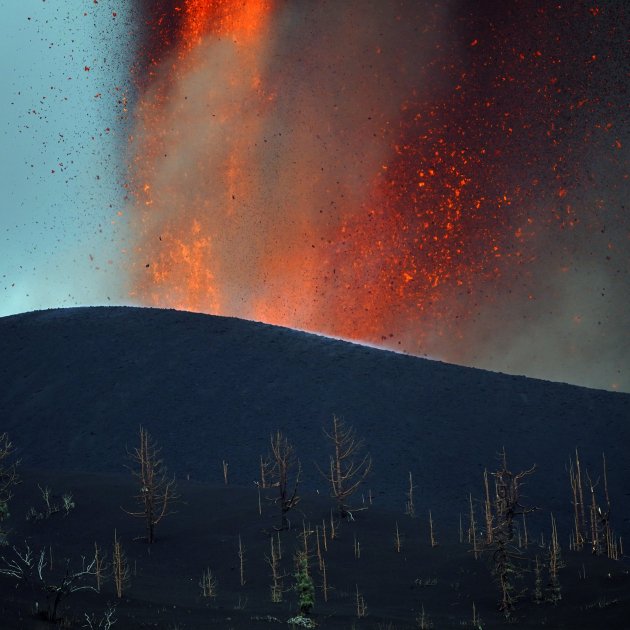Suddenly, the Cumbre Vieja volcano, on La Palma, stopped roaring just after 8:30 this morning. No more smoking, no more blowing out lava, and no noise. Suddenly, it all stopped. But as the experts warned immediately, it was premature to interpret this as a sign that the eruption was over. Indeed, in eight days of eruption, the cyclic patterns of the eruption have already been noted, with the volcano alternating moments of great explosive energy with others of relative calm.
Canary Islands media had broken the news of the truce in the volcanic violence; and accordingly, the same media advised that the activity had resumed around 12 noon. Meanwhile, geologists on the island monitoring the activity of the new volcano had met to study the situation. According to radio network SER, the halt in the eruption could have been meant three things: the volcano was being recharged with magma, a plug had formed in the main duct or the eruption was coming to an end.
Over the course of the morning, as well as over the weekend, experts noted that seismic activity on the volcano was declining. On the other hand, the volcano's explosions increased over the weekend, and for that reason the brief cessation of volcanic activity took people by surprise.
"Major fall in volcanic tremors in La Palma eruption during [Monday] morning."
After a few hours' respite, the first thing that returned was the smoke that has been expelled almost constantly from the mouths of the volcano. It was later seen that with the emission of gases the lava was returning and, finally, the Institute of Geosciences of Madrid (IGEO) announced that nine small explosions had taken place in the volcano:
Current measures
Despite the seismic slowdown over the weekend, the force of the continuing volcanic explosions led Canary Islands authorities to suspend classes at schools around the volcano for fear that the explosions could break school windows.
And a few hours before this morning's pause in the eruption, residents in four more areas of the island were also confined to their homes - with doors and windows closed - because of the possibility of the lava flow reaching the sea and emitting harmful gases.
Only last Thursday, authorities were doubting that the lava flows would in the end reach the Atlantic Ocean, but the volcano again intensified its activity on Friday and Saturday, with the appearance of new mouths along the fissure and a partial rupture of the newly-constructed cone.
Cumbre Vieja volcano in eruption / Efe
The impact of the volcano
The impact of the eight days of eruption is already immense. About 500 buildings have been destroyed so far.
The eruption has forced the evacuation of more than 6,000 people, some of whom were able to rescue belongings from their homes before fleeing the lava. Others were not so lucky.
Many properties will remain unusable for years - about 15 to 20 years minimum, depending on the thickness of the lava. After this time there will be a fertile soil rich in minerals, characteristic of the Canary Islands.
Main image: Eruption of the volcano of La Palma on Monday morning / Europa Press
